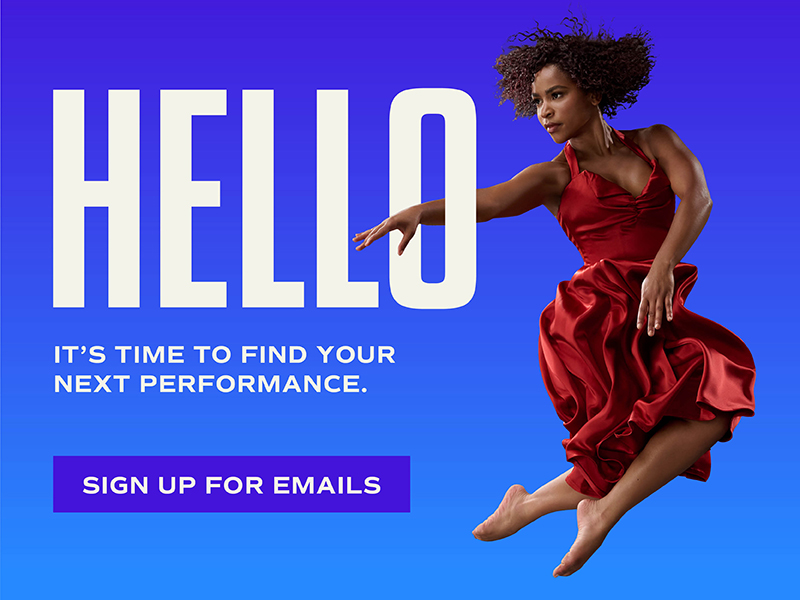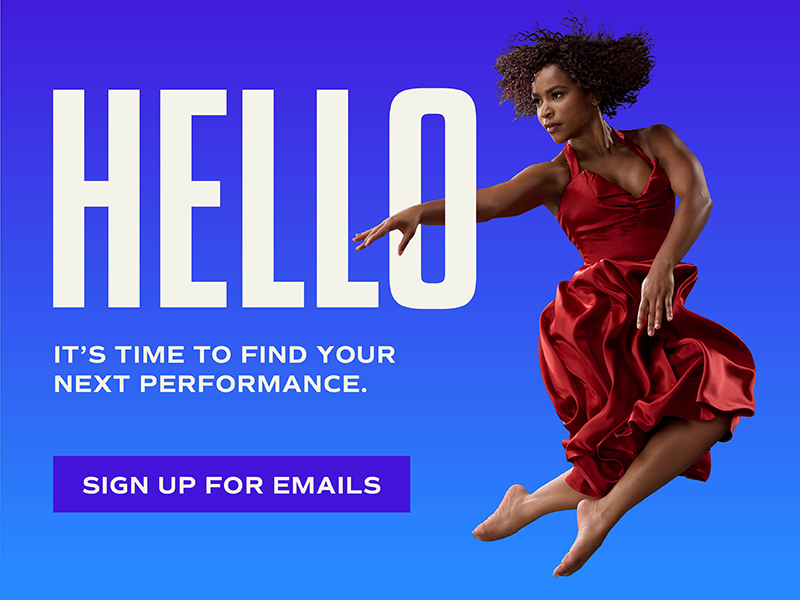5 Questions with The 7 Fingers’ Shana Carroll
Circus Family Penn Live Arts Debuts

1) What first got you into performing and circus arts?
This is not such a unique origin story for us theatre kids, but I saw a local production of Guys and Dolls in Berkeley, CA when I was four and instantly became obsessed. I decided I wanted to be an actress because, when you fall in love with the performing arts as a child, that’s sometimes the only option you see. Rarely a four-year-old sees a play and says, “I want to be a dramaturg when I grow up!” I continued theatre-ing, kind of as intensely as one can, and by 17, I was exploring professional paths.
Meanwhile, my father, a newspaper columnist in San Francisco, became enamored with the local one-ring, “European-style” circus, the Pickle Family Circus. He wrote a few columns on them, hit it off, joined their board of directors and even created annual city-wide treasure hunts as a fundraising effort. I was a “serious” theatre student and not a fan of circus. However, while pursuing acting, I needed a day job, and he suggested I work in the office at Pickles just to learn more about non-profit organizations and arts administration. So, I got a job doing group sales.
Back then, the offices and studios were all in one cozy little space. I would come to work and walk by the performers (who were my age, unlike my fellow office workers), warming up and training. Specifically—the life-changing flash I’ve now recounted hundreds of times—I watched the trapeze artist training. She was in baggy sweatpants, had messy hair and was so close that I could see the sweat and effort, hearing her skin against the ropes and bar. It rebooted what circus was in my mind. One reason I didn't like circus as a kid was that it was unrelatable. Those performers were other-worldly creatures that I could be in awe of but not moved by because they were so foreign and unreachable; I mean, they can’t be really hanging by one foot?! C’mon. But through that close-up, baggy-sweatpants lens, I saw someone I knew. There was something human inside the superhuman, the ordinary inside the extraordinary. I cared for her and therefore cared when she was hanging by one foot. I feared for her but was in awe of her bravery. She moved as if underwater. It was not only the most beautiful dance I’d ever seen but also seemed like everything I wanted from life in a snapshot on a steel bar: freedom, both metaphorically and physiologically.
“The human in the superhuman, the ordinary in the extraordinary” and such are things I now say so regularly, so key to the foundation of The Fingers, that it sounds like a cliché. But it was 100% what made me fall in love with circus in 1988 and turn my life on its axis. I think that’s what I always try to recreate in my shows in one way or another, my trapeze origin story.
So yes, in that fraction of a second, I decided to become a trapeze artist. I was not athletic; I could not touch my toes or do a pull up. But one thing I loved about circus is, you just train and train and train… pure will, passion and grit goes a very long way. What’s interesting is that when I became a trapeze artist, I thought I was abandoning proper theatre! But of course, life has a way of looping back, and I feel where I’ve landed now is really a combination of those two passions.
2) What led to the founding of The 7 Fingers?
As the name suggests, we are a collective of seven! We had extensive careers, performing in circuses and cabarets around the world, notably at Cirque du Soleil. We got to an age and level of experience where we wanted to shift to creating instead of solely performing. On an instinctive level, we wanted to offer something antithetical to Cirque du Soleil at the time, focusing on the human being and not the spectacle, the real and not the fantastic, and “the human in the superhuman,” as we said even then. More simply, we wanted to touch on deeper and more layered subject matter sometimes, to use circus dramaturgically, creating pieces that were motivated by meaning, psychology, story and character, and not just superimposed context.
For me, founding a company and directing shows were always what I wanted to do. Even as an aforementioned theatre kid, I gravitated towards directing because I think I am fundamentally more passionate about the actual making of things than being on stage myself. I learned that even at age 16. In my very first years in trapeze, the creative side really drew me in. Some people get into circus because it is sports-adjacent, but I most loved creating, writing and choreographing my acts. Performing them—yeah, OK. But the genesis of ideas, music, gestures, meanings and stories? I couldn’t get enough.
Founding The 7 Fingers was my way of finally making that transition. I still wanted to perform (at first) and work with buddies. I had ideas and visions of shows that didn’t fit into any existing mold, so we had to make our own. Founding a company seemed like the only way. It didn’t feel that different from when we were kids making up dances with friends at slumber parties. It was not only fun but seemed like the obvious next step. It was magical that each one of us seven had the same turning point that led us to founding the company. The overlapping of our paths and seizing that combined generative energy was crucial.
3) How would you describe the work that you typically create?
That’s such a funny question for me because I think we aim to do something indescribable. We’ve always pushed the fusion of circus, theatre and dance so much that no one could really slot it into either category. So, I’d best describe it as that: a hybrid form! But for our “signature shows,” the primary language is for sure acrobatic. And that highly physical element is metaphorically and purposefully used in a dramatic context to underline some essential themes such as vulnerability, courage, stakes, interdependence and humanity…certain themes that circus, with its element of risk and prowess, is the best suited to represent.
4) What themes do you pursue in your work?
I have always felt it’s important to juxtapose the naturally life-affirming and celebratory aspect of circus (defying gravity! achieving the impossible! strength! skill! courage!) with some sadness, darkness and heaviness. Each brings the other into focus, the way salt brings out the sugar.
That juxtaposition is also the nature of doing shows with meaning, shows that speak to some of my deepest concerns. I always find it interesting to wrestle with our mortality, heartbreak or grief through the otherwise life-affirming language of circus. It offers a balm: amid these hard subject matters lies this limitless, gravity-less strength of the human spirit. And someone is always there to catch you when you fall.
5) What is something unexpected that audiences may not know about circus arts?
In the case of our work and thinking of “meaning,” it’s hard, when the form is physical, to communicate that there is meaning, since so much is just felt and visceral. Often, the takeaway is just that it was electric or that a certain artist had great presence! I don’t think people realize the work behind it, dramatically speaking. The approach is like that of an actor’s, identifying intention and motivation, tapping into the emotional beat even when performing an acrobatic maneuver.
Another common misconception is that acrobats are fearless when, in fact, it’s essential to maintain fear. It’s what keeps you safe and smart. And knowing that, it’s all the more impressive what they accomplish with every trick and move; it takes SO much constant courage. Every day, every performance, they are confronting, managing and overcoming fears by the second.
Bonus Question: Do you have a lucky ritual or object that inspires you?
Oh my gosh, I’m horribly superstitious. When I was a trapeze artist, it practically took up my whole day! From the direction I uncoiled my trapeze, to which shoes I wore, to which bathroom stall I went into! Now that I’m a director, it’s not as extreme, but I do have some pronounced ones right at curtain. I sit in the audience, think through each cast member and give a little blessing: “love and safety to so and so.” Then, I go through each act in the show and “see” it, as though I myself were about to go on stage and perform, trying to get into a grounded safe zone and will that grounded-ness and safety on my cast. So, I often look like a crazy person sitting in the audience! I have my eyes closed and my hands to my face, very softly murmuring the names of the cast and the acts in the show!
I also like to hug and say “merde, have fun, be safe” to every cast member and won’t leave until I’ve gotten everyone.


